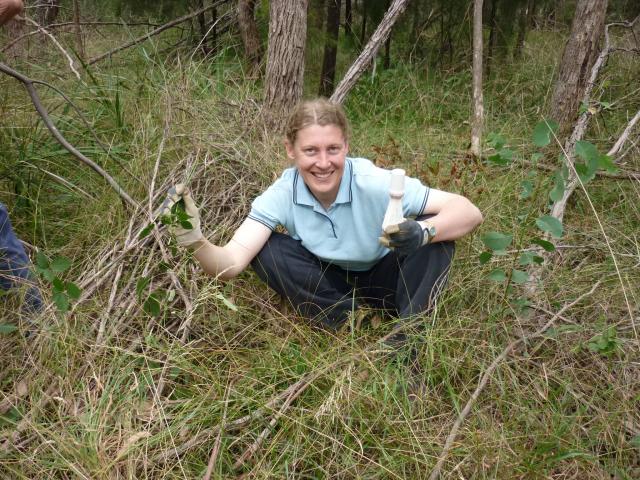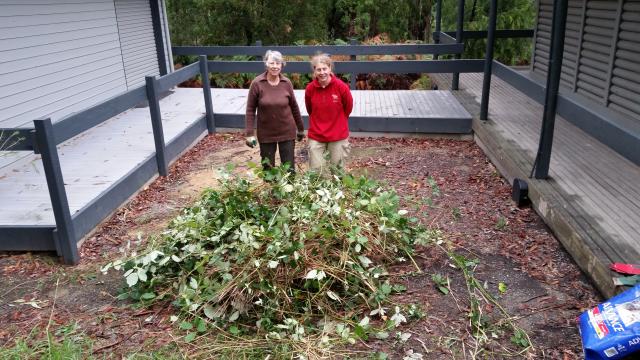
By Mikayla van Loon
Every few months residents from in and around Montrose gather at the former brickworks site on Cambridge Road to maintain the unique reserve, with the latest working bee held on Saturday 24 September.
A project led by Montrose Environmental Group’s (MEG) Karen Davies sees volunteers keep pesky weeds under control so native flora can grow and habitat isn’t disturbed.
Having been approached in 2018 asking if MEG could help control the sweet pittosporum, which were taking over the understory, Ms Davies organised a group of people to remove the native Gippsland rainforest tree over a few working bees.
“Then it continued on from there, I thought, well, we can do probably three or four working bees a year to try to address some of the key threat weeds in the reserve and try to keep some of the woody weeds under control,” she said.
By getting to these weeds early, Ms Davies said it can prevent the natural reseeding of unwanted weeds, going on to protect the understory and bushland.
“There’s some good stuff in the surrounding bushland areas that provides habitat for local animals and birds,” she said.
“It does also contain a couple of rarer species of plants that are important to the local area so by helping to protect that we’re also helping to maintain the good areas of vegetation.”
With the warmer days of spring already in motion, Ms Davies said the working bee on Saturday was an ideal time to address some of the weeds of concern before they grow too large.
“There was a little spot deeper in the reserve where I noticed quite a few pittosporums getting up, again, around sort of head height.
“So that was my focus this time to do a cut and paint of those especially being spring because things are starting to grow again so they’ll have better uptake of the poison come spring as opposed to doing it in winter.”
Angled onion was also on the agenda for maintenance because it was in the bulb exhaustion phase, meaning it was the ideal time to remove the bulbs and corms.
Ms Davies said with just a small group of three or four people it can be hard to address all areas of the reserve that need attention, particularly a group of agapanthus and a spot which was damaged during Covid-19 by walkers and riders.
While being able to keep the weeds at bay, Ms Davies said more volunteers would help restore some of the Brickworks Reserve’s natural beauty and native habitat, particularly because it will be an ongoing battle.
“Something like the flax broom, for example, that species has a seed viability of probably three or four decades.
So basically anywhere a plant has produced seed you will continue to get seedlings for the next 30 to 40 years and the key to obviously preventing them from getting out of control is making sure that the ones that then subsequently come up do not get a chance to produce seed.”
Encouraging local people to inquire about the next working bee, Ms Davies said not only is it a social group but it gives people the opportunity to learn about their local environment.
“People learn a bit more about weeds in our environment, learn a bit more about their impact, learn a bit more about native plants that are local to the area and learn how to effectively deal with complex species of weeds and I guess just spending some time in nature, in the outdoors, enjoying their local bushland areas.”
To find out more about, visit www.meg.org.au/events/brickworks







